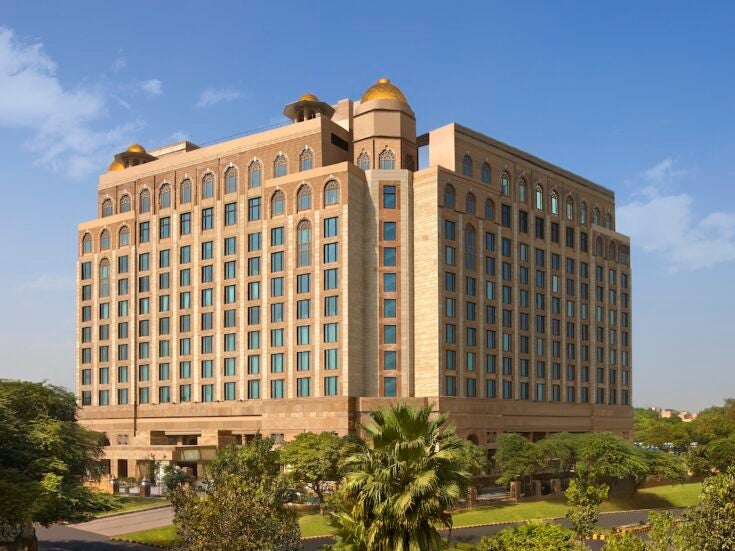Here are eight of the most beautiful libraries in the world, whose amazing ambience would make you reach out for the most insipid book just to bask in their spectacular surroundings. Inhale the Baroque beauty of the amazing bibliothèques of Austria’s Admont Abbey and the National Library, while savouring the ancient wisdom of the treasured tomes of Klementinum and Strahov in the Czech Republic.
Klementinum Library, Prague
Located in Prague, Czech Republic and inaugurated in 1722, the stunning Klementinum Library has been aptly nicknamed “the Baroque pearl of Prague”. With a history dating back to the 11th Century chapel named after Saint Clement and turned into a Jesuit college in 1556, stunning spiral pillars and gold-tinted interiors echo the wisdom of the 20,000 plus tomes resting sage-like in their neatly stacked shelves. The aura of grandeur is amplified by a seemingly mystical collection of globes (astronomical and geographical) and astronomical clocks in the centre of the library.
The Austrian Empress Maria Theresa declared it a public university library and observatory in 1777. In 1781, a collection of Czech literature called Biblioteca Nationalis began to be stored, which would later provide a reason for it to be made the National Library—a role that it has played since 1990. Typical Baroque frescoes on the ceiling by Jan Hiebl enthrall visitors as much as its book collection. Awarded the UNESCO Memory of the World Prize in 2005, Klementinum is now collaborating with Google to digitise some of its books, which will be made available on Google Books.
Austrian National Library, Vienna
Once the abode of the kings and queens of Austria, Vienna’s Hofburg Palace is an official residence of the nation’s president today as well as housing the Austrian National Library. A Baroque beauty constructed by architect Bernhard Fischer von Erlach and his son Johann Emanuel between 1723 and 1735, the Court Library in the palace showcases an incredible 7.4 million items, among which 2.5 million are rare books collected since the 14th century. The collection also includes papyri.
Highlights of the Austrian National Library are the huge, amazing ceiling frescoes by painter Daniel Gran, beautiful statues on the dome in honour of the Habsburg rulers by sculptor Paul Strudel and two Venetian baroque globes, measuring over one metre in diameter representing the Earth and the sky. Certain bookcases contain concealed passages through which the library employees slip in and out every once in a while.
Biblioteca Joanina, Coimbra
The Biblioteca Joanina or Johannine Library is located in the University of Coimbra, Portugal and was built between 1717 and 1728 during the reign of King John V. Known at the time as the Casa da Livraria, the Joanina began collecting its first books from 1750, with volumes dating back to the 16th century.
Double-storied, exotic wood shelves cover the walls, whose paint and gilt blend in perfectly with the Baroque ambience; enhanced by the ceiling frescoes of Lisbon’s Vicente Nunes and Simões Ribeiro. The interior of the library sports opulent arches. About 250,000 tomes are preserved in this three-floored building, still in pristine condition due to a perennially constant temperature and humidity. The oak wood construction of this vault emits an odour that repels attacks on the books by papirófagos—paper-eating insects.
The Joanina is also one of two libraries in the world (the other being Portugal’s Mafra Palace Library) whose precious tomes are protected from the papirófagos by bats allowed to reside within the premises. However, each night, the furniture is covered with leather to protect it from bat droppings. This sanctuary for both books and bats was declared a world heritage site in 2013.
Wiblingen Monastery Library, Ulm
Designed by Christian Wiedemann and built between 1714 and 1744, the Wiblingen Monastery Library is located in Ulm, Baden-Württemberg, Germany. It was a former Abbey established by Count Hartmann and Count Otto von Kirchberg in honour of St Martin, in 1093 and inhabited by Benedictine monks from the Black Forest area. A masterpiece of baroque craftsmanship with wondrously elegant Rococo interiors regaling its visitors, the double-storied library houses 15,000 books.
No surface has been left undecorated as the rich palette of blue, gold and pink soothe the sore eyes, while the masterpiece ceiling frescoes by Januarius Zick transport readers to a different dimension altogether. Although made of wood, the statues and columns are painted in such a way as to appear like marble, which support as well as enhance the beauty of a winding gallery that gazes down from all sides upon visitors below. The statues pay tribute to the Christian virtues of Solitude, Piety, Obedience and Devotion and the disciplines of History, Philosophy, Theology and Law, the books are arranged near their corresponding statues. There are also secret doors to private chambers.
Stiftsbibliothek Sankt Gallen or Abbey Library of St Gall
One of the largest medieval libraries of the world and an important intellectual centre of Western Europe for a long time, the Stiftsbibliothek Sankt Gallen or the Abbey Library of St Gall in Switzerland dates back to 820 AD, according to the Abbey’s architectural plans. Established by the Irish monk Gallus in the 7th century, the abbey followed the rule of St Benedict for over a millennium, a rule requiring monks to study religious scriptures and other books.
A veritable “sanctuary for the soul” the Stiftsbibliothek Sankt Gallen became famous in the 10th century as a leading center for science. In the 18th century, architect Peter Thumb designed a new library for this collection of manuscripts and books using ostentatious Baroque art garnished with liberal amounts of Rococo. The Library, with its elegantly painted ceilings, holds over 160,000 books and was listed as a UNESCO World Heritage Site in 1983. It also contains the world’s first architectural plan drawn on parchment.
The Royal Library of San Lorenzo de El Escorial
Built in the 16th century by Spanish architect Juan Bautista de Toledo under the direction of King Philip II of Spain, in 1559, The Royal Library or Real Biblioteca stands inside the palace complex and monastery of San Lorenzo de El Escorial, 45 kilometres away from Madrid. With Toledo’s death in 1567, his apprentice Juan de Herrera went on to see its completion in 1584.
El Escorial is the first library in Europe to keep bookshelves along the walls rather than the previous practice of having them in perpendicular bays, for better visibility of the titles and lesser damage to the books. The 40,000 plus books and manuscripts in El Escorial encompass various languages such as Greek, Latin, English, Portuguese, Spanish, Italian, French, Hebrew and even the Aztec language of Nahuatl. The wonderful ceiling frescoes represent the seven ancient arts with the central fresco commemorating the legendary wisdom of King Solomon. The special feature of the library is the beautiful armillary spheres and Baroque globes part of the special collection of King Phillip. Declared a World Heritage Site by UNESCO in 1984, it is said that the Vatican Library’s design was inspired by the Royal Library.
Strahov Monastery Library or Strahovská Knihovna, Prague
Prague’s Strahov Monastery was first built in 1140 along with its library and, although the monastery had to be restored several times because of wars, the Strahovská Knihovna or Strahov Monastery Library has not lost its magical charm and monks still live in the monastery.
Divided into two major halls— the majestic Philosophical Hall containing over 42,000 ancient philosophical texts and the Baroque-rich Theological Hall containing 18,000 religious texts—the beautiful Strahov Library’s mysterious allure is enhanced by its brilliantly frescoed ceilings and stunning 17th century geographical globes.
Stiftsbibliothek Admont or Abbey Library of Admont
Claiming to be the world’s largest monastery library, the Stiftsbibliothek Admont in Austria is a resplendent Baroque repository of knowledge that was built in 1776 on the lines of the Imperial Court Library in Vienna. Commissioned by Abbot Matthäus Offner, its construction was supervised by Austrian architect par extraordinaire Josef Hueber.
True to its claim, the gigantic and picturesque tri-chambered library houses some 70,000 books, with a total of about 200,000 tomes preserved in the Abbey. The Library houses 1400 plus manuscripts (with the oldest of them going back to 800 AD) and the 530 incunabula (books printed before 1501 AD) are a highlight in its collection.














